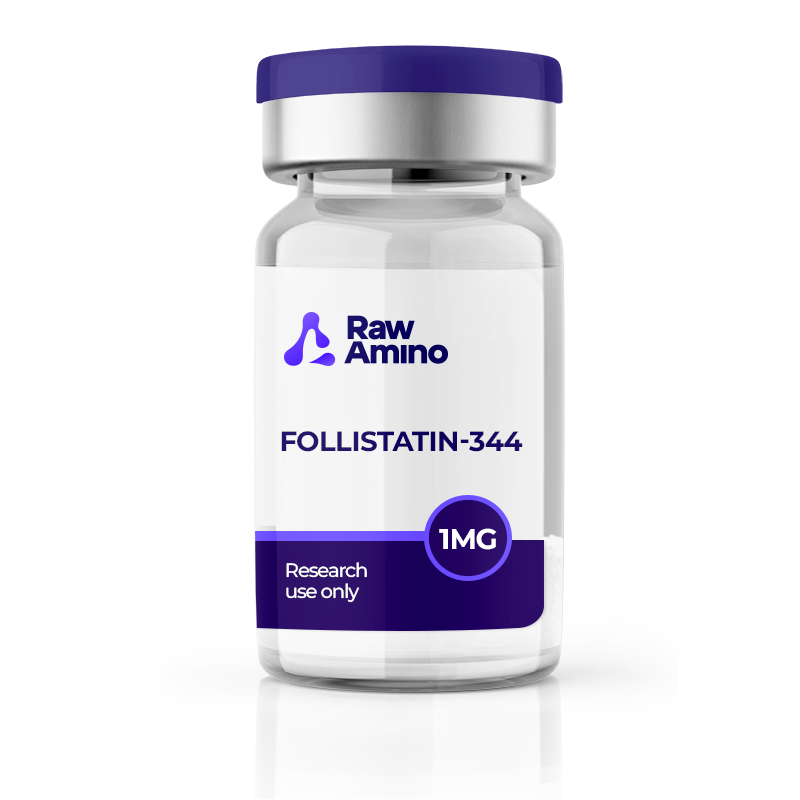
Follistatin-344 – 1MG
$161.00
Discount per Quantity
| Quantity | Discount | Price |
|---|---|---|
| 5 - 8 | 5% | $152.95 |
| 9 + | 10% | $144.90 |
Scientific Overview of Follistatin-344
Follistatin-344 is a synthetic version of a naturally occurring protein variant that plays a role in modulating biological signaling pathways. Endogenously, Follistatin is expressed in multiple isoforms, with FST-344 generally recognized as the more prevalent form across tissues. Its biological role has been linked to interactions with proteins of the transforming growth factor-beta (TGF-β) family, including myostatin, activin, and follicle-stimulating hormone. Research interest has centered on how this protein may influence pathways associated with cellular growth, tissue regulation, and signaling networks.
Alternative Names: Activin-binding protein, FST, FSH-suppressing protein
Follistatin-344 Studies and Research Data
Investigations into Muscle Cell Development
Several studies suggest that Follistatin-344 may play a role in modulating the activity of myostatin, a protein recognized for restricting muscle cell growth. Findings in laboratory models propose that interaction between Follistatin-344 and myostatin might support increased opportunities for muscle fiber formation and expansion. Research using animal models has reported associations between increased muscle mass and the presence of Follistatin-344, potentially through mechanisms such as hypertrophy and hyperplasia. Additional studies have proposed that this pathway may also be relevant in exploring conditions linked to muscle wasting or degenerative changes.
Follistatin-344 Research on Diabetes and Pancreatic Function
In murine studies, Follistatin-344 has been investigated for its potential role in influencing pancreatic beta-cell proliferation. Overexpression in animal models appeared to correspond with larger islet mass and increased beta-cell division. Researchers suggest these observations may involve interactions with signaling pathways such as SMAD2/3 and PI3K-Akt. Experimental findings also hinted at possible links to betatrophin levels, which may further support beta-cell activity. These early-stage observations remain under active investigation.
Follistatin-344 Studies in Breast Cancer Models
Research on breast tissue has indicated variable expression levels of Follistatin-344. Under-expression has been associated with increased rates of metastasis in certain studies, while overexpression was correlated with more favorable outcomes. One study suggested that Follistatin-344 may counteract activin-driven cellular migration, potentially reducing metastatic spread. However, results indicated complexities, as altered expression may influence tumor growth differently depending on cellular context.
Explorations in Esophageal Carcinoma and Fibrosis
In models of Barrett’s esophagus, a precursor condition to esophageal carcinoma, the protein has been investigated for its potential to counter bone morphogenic protein (BMP)-mediated changes. Findings suggest that Follistatin-344 may interfere with early tissue alterations that precede malignant transformation. Additional research in animal models has examined its potential to reduce liver fibrosis, with some reporting measurable decreases in fibrotic progression.
Follistatin-344 Interactions with Activin A
Beyond myostatin, Follistatin-344 has been studied for its interaction with activin A, another TGF-β family member. Activin A is considered to influence pathways leading to muscle breakdown and remodeling. By potentially countering activin A activity, Follistatin-344 may support more balanced muscle protein dynamics in research models. This dual interaction has prompted investigations into its relevance for muscle conditions characterized by weakness or fibrotic changes.
Conclusion
Research on Follistatin-344 has focused on its proposed interactions with members of the TGF-β protein family, particularly myostatin and activin A. Laboratory and animal studies suggest potential roles in muscle development, pancreatic beta-cell regulation, fibrosis, and certain cancer models. While findings are diverse and context-dependent, Follistatin-344 remains a protein of scientific interest for its possible influence on cellular growth and signaling pathways.
References
- Zhao C, Qiao C, Tang RH, Jiang J, Li J, Martin CB, Bulaklak K, Li J, Wang DW, Xiao X. Overcoming Insulin Insufficiency by Forced Follistatin Expression in β-cells of db/db Mice. Mol Ther. 2015 May;23(5):866-874.
- Schumann C, Nguyen DX, Norgard M, Bortnyak Y, Korzun T, Chan S, Lorenz AS, Moses AS, Albarqi HA, Wong L, Michaelis K, Zhu X, Alani AWG, Taratula OR, Krasnow S, Marks DL, Taratula O. Increasing lean muscle mass in mice via nanoparticle-mediated hepatic delivery of follistatin mRNA. Theranostics. 2018;8(19):5276-5288.
- Shi L, Resaul J, Owen S, Ye L, Jiang WG. Clinical and Therapeutic Implications of Follistatin in Solid Tumours. Cancer Genomics Proteomics. 2016;13(6):425-435.
- Haidet AM, Rizo L, Handy C, Umapathi P, Eagle A, Shilling C, Boue D, Martin PT, Sahenk Z, Mendell JR, Kaspar BK. Long-term enhancement of skeletal muscle mass and strength by single gene administration of myostatin inhibitors. Proc Natl Acad Sci U S A. 2008;105(11):4318-22.
- Chang F, Fang R, Wang M, Zhao X, Chang W, Zhang Z, Li N, Meng Q. The transgenic expression of human follistatin-344 increases skeletal muscle mass in pigs. Transgenic Res. 2017;26(1):25-36.
- Zabkiewicz C, Resaul J, Hargest R, Jiang WG, Ye L. Increased Expression of Follistatin in Breast Cancer Reduces Invasiveness and Clinically Correlates with Better Survival. Cancer Genomics Proteomics. 2017;14(4):241-251.
- Ozawa T, Morikawa M, Morishita Y, Ogikubo K, Itoh F, Koinuma D, Nygren PÅ, Miyazono K. Systemic administration of monovalent follistatin-like 3-Fc-fusion protein increases muscle mass in mice. iScience. 2021;24(5):102488.
- Iskenderian A, Liu N, Deng Q, Huang Y, Shen C, Palmieri K, Crooker R, Lundberg D, Kastrapeli N, Pescatore B, Romashko A, Dumas J, Comeau R, Norton A, Pan J, Rong H, Derakhchan K, Ehmann DE. Myostatin and activin blockade by engineered follistatin results in hypertrophy and improves dystrophic pathology in mdx mouse more than myostatin blockade alone. Skelet Muscle. 2018;8(1):34.
Disclaimer:
The products mentioned are intended solely for laboratory research and in-vitro experimentation. They are not approved for human or animal use of any kind. All details provided are for educational purposes only. By purchasing from this site, you agree to comply with our Terms and Conditions.
15 reviews for Follistatin-344 – 1MG
Only logged in customers may leave a review.
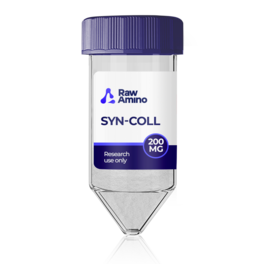
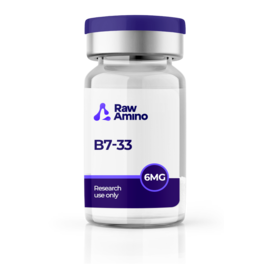
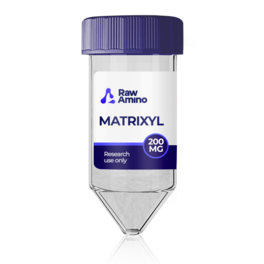
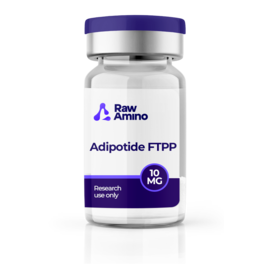

amanda610 –
Warren U. –
HeatherF –
Elizabeth K. –
mikayla68 –
nicoleadams –
william_williams –
christina1779 –
jeffrey2487 –
Raw amino customer service was so great, I made the wrong order of follistatin by accident and they called me right away and made sure the shipping team got the right package out the door the very same day. Thank you for your amazing care, team!!!
VectorSparrow –
kevin84 –
susan_gonzales –
IMO compared with other vendors, Raw Amino has been more reliable in purity.
susan_gonzales22 –
Nicole172 –
eric6444 –